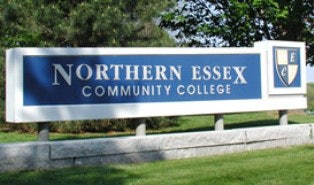The city of Lawrence, Mass., is home to highest concentration of Dominicans outside of New York City. Klinbert Garcia, a student at the local Northern Essex Community College (NECC), can attest to Lawrence’s uniquely Dominican character.
“In New York I was with a different crowd in terms of demographics,” he said. “But when I arrived at Lawrence High, it was almost like going back to the D.R., being at home essentially, because these people relate to your culture and you can have similar conversations when it comes to family.”

He credits Northern Essex with inspiring him with his current academic aspirations, after opening his eyes to the possibilities after introducing him to Hispanic professors and for taking him to visit colleges and universities in Boston. “I wouldn’t have had it in mind to go to Boston and check out the educational abundance there,” Garcia says, explaining that he took part in a PACE program trip to get a sense of what college options are in Boston.
Although Northern Essex’s Lawrence campus enrollment is growing quickly, a striking accomplishment in a time when college enrollments overall are declining, the city of Lawrence has one of the lowest college completion rates in the state. According to U.S. census data, only 12 percent of adults in Lawrence hold a four-year college degree, compared to the 39 percent of Massachusetts residents overall who have a college degree.
Yet recent initiatives at Northern Essex show that there is an untapped wealth of college education in Lawrence, in the form of degrees and credits earned by immigrants at colleges in other countries that have not yet been validated by a U.S. institution. This is an issue that is not unique to Lawrence. In cities and towns across U.S., someone who was a doctor or professor in the Middle East might now be working as a taxi driver, or a former pharmacist in South America might now be working stocking supermarket shelves.
According to the Migration Policy Institute, approximately 1.8 million college educated immigrants were working in low-wage, low-skill jobs in the period between 2012 to 2014. It is a phenomenon most commonly referred to as “brain waster.”















